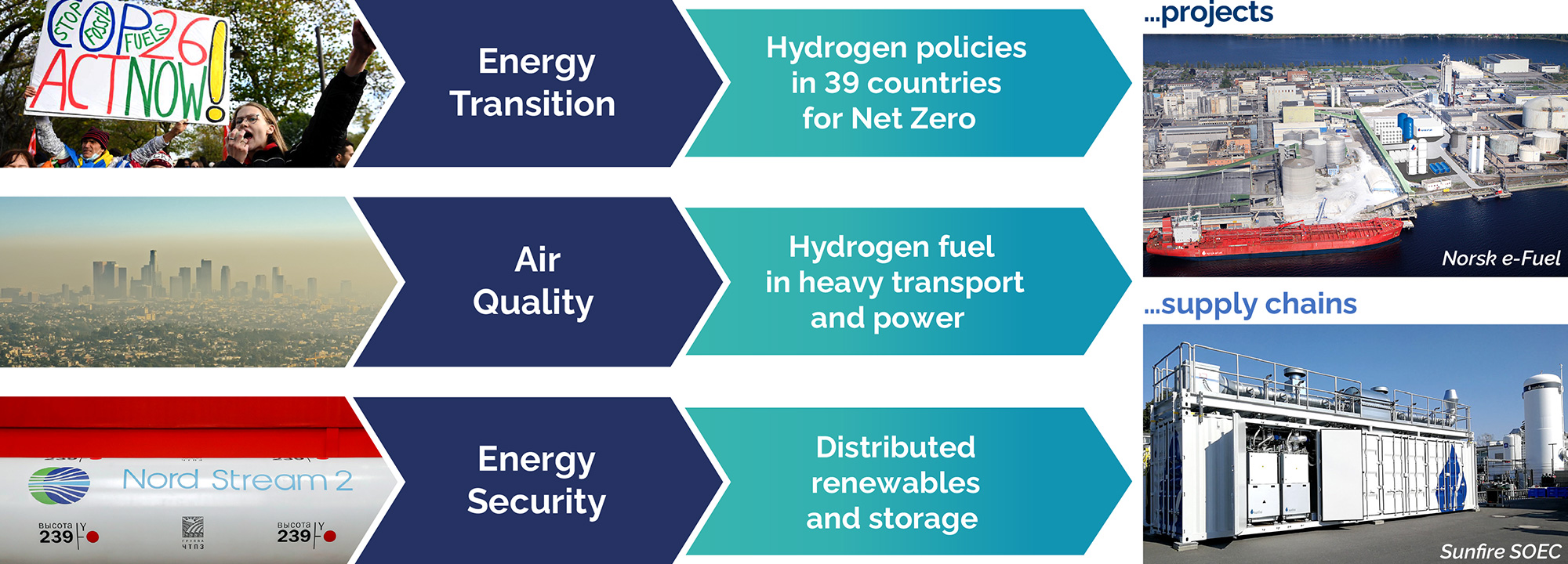Gen2 Energy is a Norwegian company dedicated to developing, building, controlling and operating an integrated value chain for green hydrogen. The company aims to establish production capacity at large-scale for green hydrogen based on 100 percent renewable energy, and to operate a reliable and efficient logistics network.
About hydrogen
Hydrogen demand could increase by over 8 times by 2050 as the energy transition gathers pace
What is driving the hydrogen economy?
Clean hydrogen:
- Clean hydrogen displaces fossil fuels, reducing CO2 emissions and improving air quality;
- Some 90 million tonnes of hydrogen per day are used today in the manufacturing of oil products, chemicals, and steel. The demand to replace this polluting ‘grey’ hydrogen, mostly produced from natural gas, with clean hydrogen underpins the growth in the clean hydrogen sector;
- Clean hydrogen can also replace fossil fuels in hard to decarbonise sectors such as power generation and transport;
- Clean hydrogen is an energy carrier that can store and distribute intermittent renewable electricity at a large scale; and
- Hydrogen combined with renewables such as wind and solar provides a domestic energy supply option for many countries, reducing reliance on imported energy.
Decarbonising the energy system
Clean hydrogen is a Net Zero gas, and this has been recognised in the plans adopted to date by the EU, USA, India and over 39 countries – all of which have committed to the use of clean hydrogen to decarbonise industry and to improve air quality. They have backed this commitment with multi-billion dollar funding to kick-start the process. Other countries are expected to follow suit.
This means that markets for clean hydrogen and its production processes are growing fast and accelerating. The potentially large market to replace hydrogen produced from hydrocarbons in the current hydrogen supply chain is already being addressed by the falling costs of renewable energy and electrolysis as well as by carbon capture and storage pilots.
By 2050, the global hydrogen market could reach $2.5 trillion, dominated by hydrogen producers, electrolyzers, and fuel cell manufacturers. Replacing today’s c.$175 billion ‘grey’ hydrogen market with clean hydrogen could mitigate over 800 million tonnes per annum of greenhouse gas emissions. Some 20 billion tonnes per annum of GHG emissions can be addressed with clean hydrogen over time, which is over one-third of all GHG emissions today.
-
Conversion of renewables to hydrogen
-
Multiple hydrogen applications to replace fossil fuels
-
20 billion tonnes/yr GHG reduction potential











